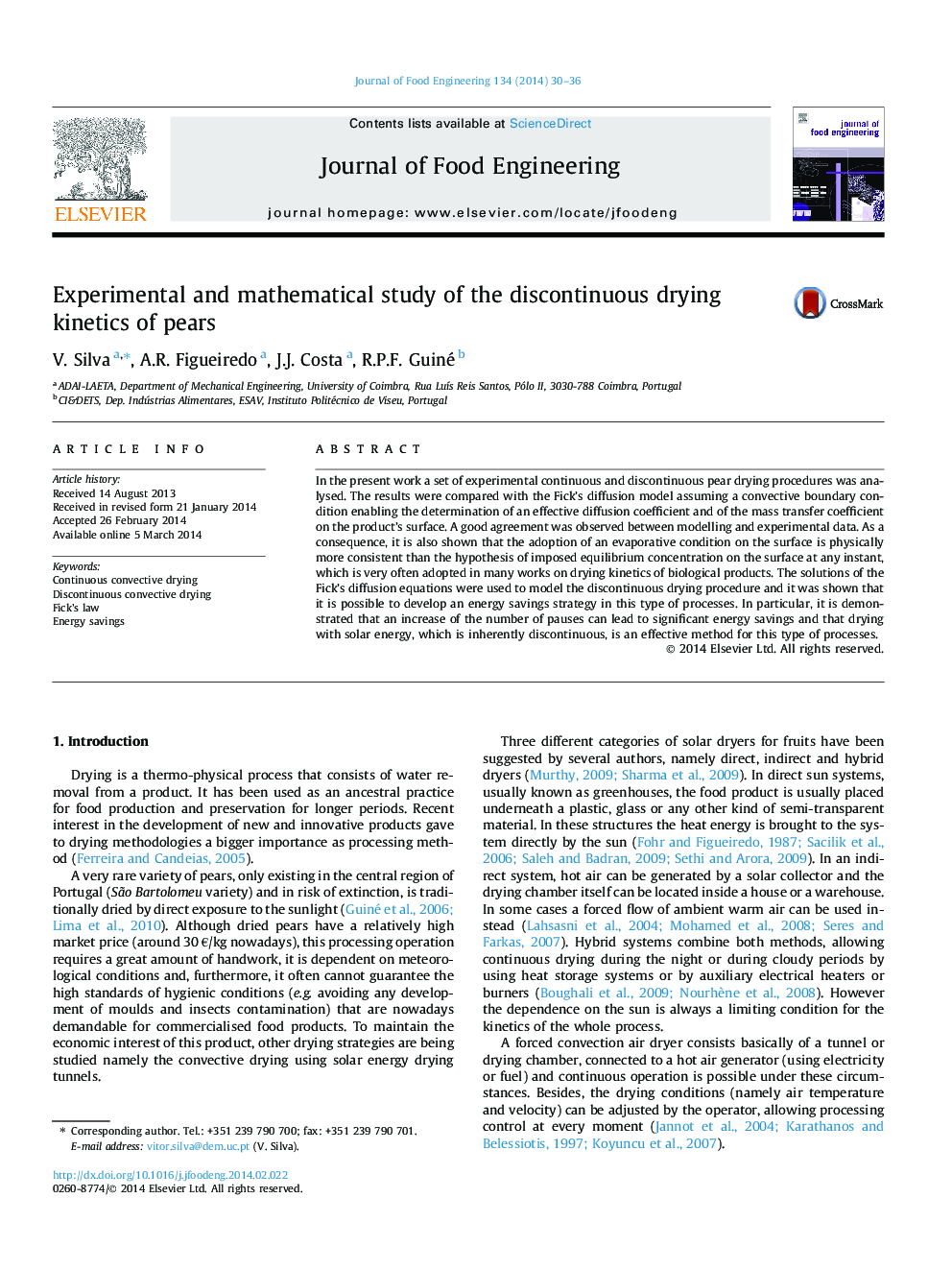| Article ID | Journal | Published Year | Pages | File Type |
|---|---|---|---|---|
| 6665798 | Journal of Food Engineering | 2014 | 7 Pages |
Abstract
In the present work a set of experimental continuous and discontinuous pear drying procedures was analysed. The results were compared with the Fick's diffusion model assuming a convective boundary condition enabling the determination of an effective diffusion coefficient and of the mass transfer coefficient on the product's surface. A good agreement was observed between modelling and experimental data. As a consequence, it is also shown that the adoption of an evaporative condition on the surface is physically more consistent than the hypothesis of imposed equilibrium concentration on the surface at any instant, which is very often adopted in many works on drying kinetics of biological products. The solutions of the Fick's diffusion equations were used to model the discontinuous drying procedure and it was shown that it is possible to develop an energy savings strategy in this type of processes. In particular, it is demonstrated that an increase of the number of pauses can lead to significant energy savings and that drying with solar energy, which is inherently discontinuous, is an effective method for this type of processes.
Keywords
Related Topics
Physical Sciences and Engineering
Chemical Engineering
Chemical Engineering (General)
Authors
V. Silva, A.R. Figueiredo, J.J. Costa, R.P.F. Guiné,
